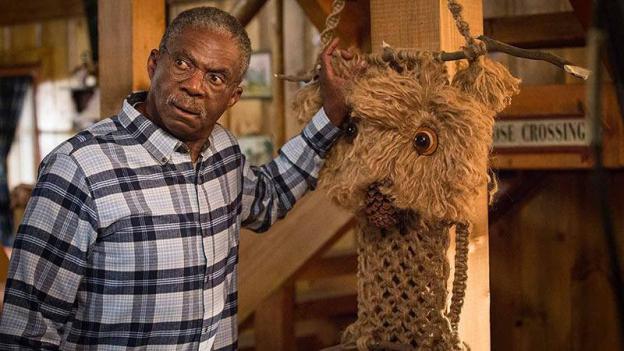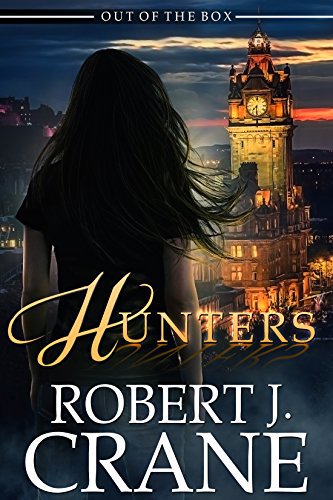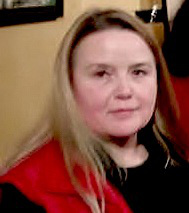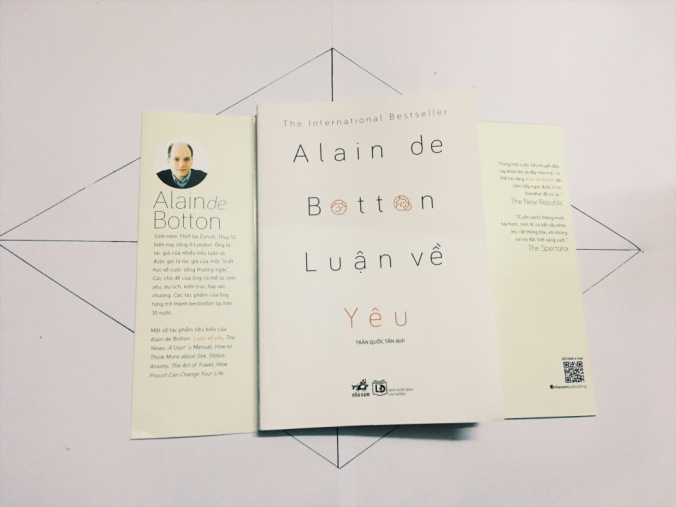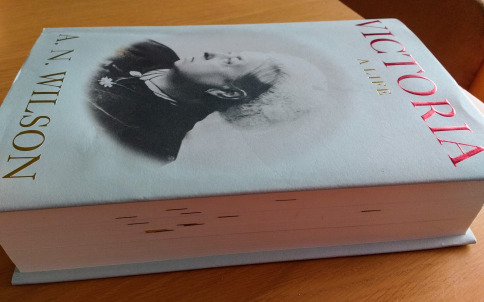
I’ve been reading Victoria: a Life by A N Wilson and writing an occasional post as I’m reading this long book.
One of the things that interests me is Victoria’s relationships with the men around her – such as with Albert, Lord Melbourne, Gladstone and Disraeli. But there is also her relationship with John Brown. Years ago I saw the excellent film Mrs Brown with Judi Dench as Queen Victoria and Billy Connolly as John Brown and I was wondering what Wilson would make of their relationship.
She first met John Brown when he was one of the gillies at Balmoral in 1848. He also worked in the stables. In 1864, still grieving for Albert, Victoria found Balmoral a place that brought consolations. In the happy days of her marriage she had taken a great shine to John Brown.
By the end of 1864, Princess Alice, who had noticed that rides in the pony cart at Balmoral were almost the only things which made her mother half cheerful, recommended that they brought Brown to England. She put the idea to Dr Jenner and to Colonel Phipps, Keeper of the Privy Purse. They both agreed that it was an admirable idea. So it was, in December 1864, that John Brown came to Osborne House.
From now onwards, Brown would be he constant companion. At Osborne, he brought in her correspondence at 10 am, and took her for a morning ride. This was repeated in the afternoon. At Balmoral, he stayed with her while she did her correspondence and took it upon himself to post her letters. At Windsor, he would stand guard in the corridor outside her room, ‘fending off’, as one courtier put it, ‘even the highest in the land’.
The very qualities which others found irritating in Brown were ones which made him an ideal companion for Queen Victoria. (page 286)
Brown was humorous, abrasive with pompous courtiers, but above all he treated her like a human being and was devoted to her. But the amount of time he spent with the Queen alarmed the Establishment and the Court – his lack of side, his directness and his breeziness, all of which Victoria liked, offended them:
And of course they suspected him of sleeping with her. Lord Stanley, Foreign Secretary in his father Lord Derby’s Third Cabinet, asked in his journal, ‘Why is the Queen penny wise and pound foolish? Because she looks after the browns and lets the sovereigns take care of themselves.’ (pages 321-2)
Wilson considers that whatever the situation was between them, Victoria’s infatuation with Brown and his unruly behaviour at Court were enough to cause the scandal:
‘It was the talk of all the Household,’ said that notoriously unreliable tittle-tattler Wilfrid Scawen Blunt, ‘that he was “the queen’s stallion” … he was a fine man physically, though coarsely made and had fine eyes (like the late Prince Consort’s, it was said) and the Queen, who had been passionately in love with her husband, got it into her head that somehow the prince’s Spirit had passed into Brown and after four years of widowhood, being very unhappy allowed him all privileges … She used to go away with him to a little house in the hills where, on the pretence that it was for protection and to “look after the dogs”, he had a bedroom next to hers, ladies in waiting being put at the other end of the building … [There could be] no doubt of his being allowed every conjugal privilege.’ (page 323)
Scawen Blunt’s tittle-tattle was not proven.
Despite having worked on the subject of Queen Victoria for many years Wilson concluded that he felt unable to make up his mind about the nature of the Queen’s relationship with Brown. His instinct is
to believe that it was what it appears in her letters to Vicky: namely an embarrassingly close monarch-and-servant relationship.Brown meant it when he said he would die for her, and the Queen meant it when she called him her ‘treuer’ Brown. If I were forced to say what did or did not happen, I would point out the impossibility of carnal relations between them in her early days of widowhood, when she was plainly fixated on the memory of Albert, and he was plainly no more than her Highland servant. (page 325)
But then Wilson records the words of Lewis Harcourt, who was the son of Gladstone’s Home Secretary and Chancellor of the Exchequer quoting from Lady Ponsonby in 1885 – wife of the Queen’s Private Secretary who
… ‘told the Home Secretary a few days ago that Miss Macleod declares that her brother Norman Macleod confessed to her on his deathbed that he had married the Queen to John Brown and … had always bitterly regretted it. Miss Macleod could have no object in inventing such a story, so that one is almost inclined to believe it, improbable as it sounds. (page 326)
Norman Macleod was the Minister at Crathie, on the edge of the Balmoral estate, where the Royal Family worshipped.
However, the truth about their relationship remains a mystery – there was a file containing all the letters from John Brown to Queen Victoria but they were destroyed (page 422). After Victoria’s death, her daughter Princess Beatrice copied her diaries and censored them as she did so and Bertie went round rooms at both Windsor and Buckingham Palace ‘destroying as he went‘. ‘Busts and statues of John Brown were smashed. (His statue at Balmoral was removed to a remote corner of the estate.)’ (page 574)
Share this:
